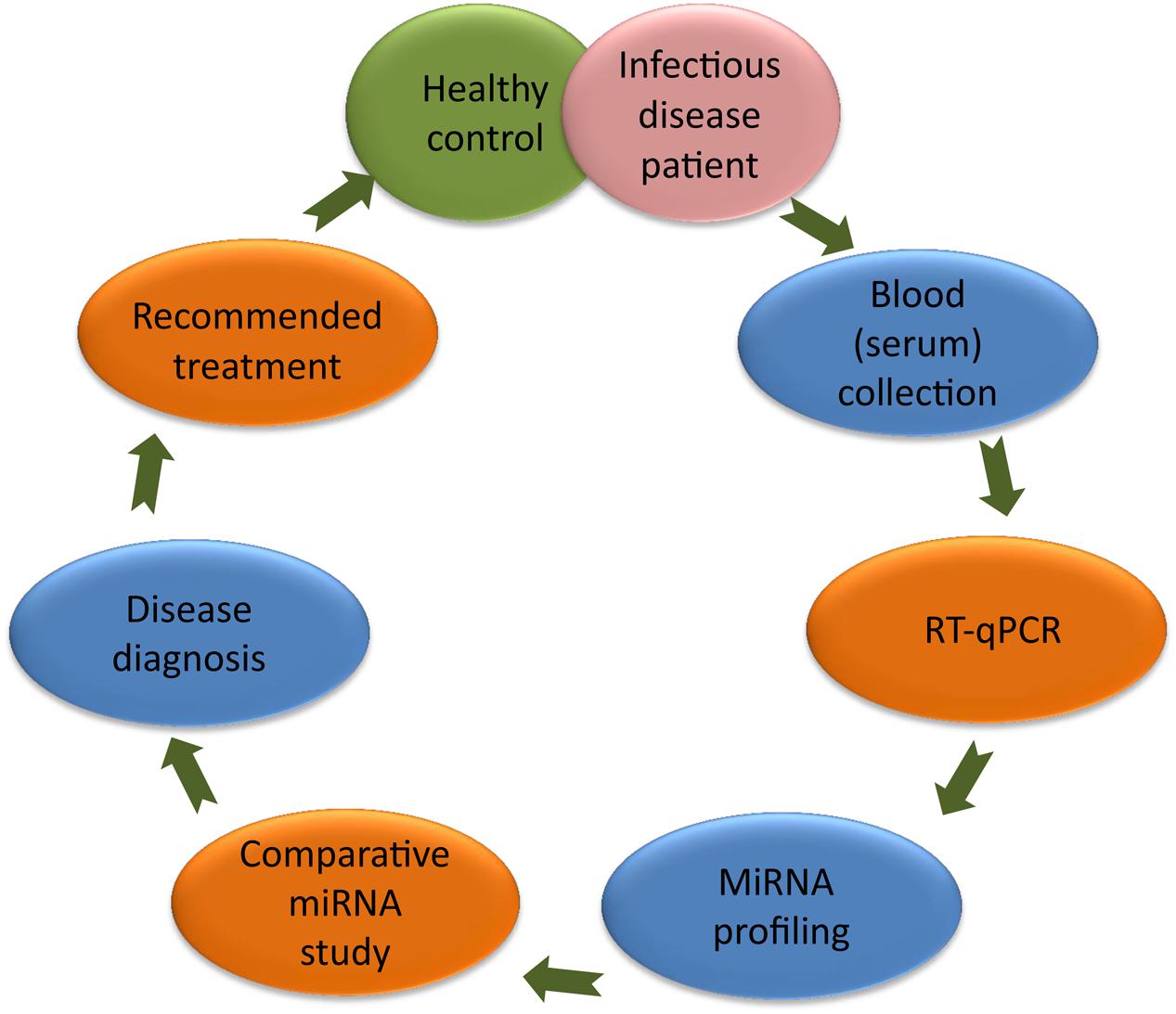
Diagnosis of Infectious Diseases
Microorganisms, such as bacteria, viruses, fungi, and parasites cause infectious diseases.
The doctor suspects an infection based on the symptoms, the results of the physical examination and the risk factors of the affected person. First, it is confirmed that the patient has an infection instead of another type of disease. For example, a patient with a cough and shortness of breath may have pneumonia (lung infection). However, you may also have asthma or heart failure. In this patient, a chest x-ray can help distinguish pneumonia from other possible diagnoses.
Once the doctor confirms that the patient has an infection, he usually needs to know what specific microorganism is causing it. Many different types of microorganisms can cause a given infection. For example, pneumonia can be caused by viruses, bacteria, or rarely, fungi. The treatment is different for each of them.
Different laboratory tests allow the identification of microorganisms. A sample of blood, urine, sputum, or other tissue or body fluid is used. These samples can be
Dye and examine under a microscope
Cultivate (subject to conditions that stimulate the growth of microorganisms)
Analyze to check for antibodies produced by the person’s the immune system in response to the microorganism
Analyze to detect the presence of antigens of a microorganism (molecules of the microorganism that are capable of triggering an immune response in the body)
Detect genetic material (such as DNA or RNA) from the microorganism
No test can identify all microorganisms, and those that are useful for one are often not efficient for another. The doctor chooses the test based on the microorganism that he thinks is more likely to cause the disorder in question.
Sometimes several different ones are performed, usually in a specific order, according to the results obtained in the test previously performed. Each one further defines the possibilities. If the proper test is not performed, the cause of the infection cannot be identified.
Some samples that are sent for analysis, such as sputum, feces, and smears from the nose or throat, usually contain many types of bacteria that are not responsible for the disease. The doctor distinguishes between these bacteria and those that could cause the patient’s illness. Other samples come from locations that, under normal conditions, do not contain microorganisms (which are sterile), such as urine, blood or cerebrospinal fluid (the fluid that surrounds the brain and spinal cord). The finding of bacteria in these samples is abnormal. To read more about bacteria visit here mediologest.
Once a microorganism is identified, the doctor can do tests to determine which drugs are more effective (sensitivity tests) so that the treatment that seems most effective can be started before.
Staining and examination under a microscope
Sometimes, the doctor can identify a microorganism simply by examining the sample under a microscope.
Most samples are processed using stains. Stains are special chemicals that give color to microorganisms, making them stand out against the background. Some microorganisms have a different size, shape or color that allow them to be recognized.
However, many are very similar and cannot be distinguished using a microscope. In addition, there must be a sufficient number of microorganisms and they must be large enough to be seen with the microscope. For example, viruses cannot be identified using the microscope, since they are too small.
For bacteria, Gram stain (a violet stain) is often used first. Bacteria are classified as follows:
Gram-positive (which looks blue because they retain Gram staining)
Gram-negative (they look red because they do not capture staining)
This allows some decisions to be made regarding treatment, depending on whether the responsible bacterium is gram-positive or gram-negative.
In addition to Gram staining, other stains may be used depending on the microorganisms that are considered to be present.
Cultivation of microorganisms
Usually, a sample contains very few microorganisms so that they can be seen with the microscope or can be identified using other tests. Therefore, it is usually tried to increase the number of microorganisms (cultivating them) in the laboratory, until they are sufficient to be able to identify them. A sample is taken from the area of infection that the microorganism may contain. Samples may include

- Blood
- Sputum
- Urine
- Stool
- Tissue
- Cerebrospinal fluid
Mucus from the nose, throat or genital area
The sample is deposited on a plate or in a culture test tube that contains specific nutrients that favor the growth of microorganisms. Different nutrients are used depending on the microorganism that is suspected. Often, certain chemicals are added to the plate or test tube to stop the growth of those microorganisms that do not cause the disease that the patient is suspected of suffering.
Many microorganisms, such as bacteria that cause urinary tract infections or in the case of streptococcal pharyngotonsillitis, can be easily grown. Some bacteria, such as the bacteria that cause syphilis, cannot be cultured. Other bacteria, such as those that cause tuberculosis, although they can be grown, take several weeks to grow. Some viruses can be cultured, but many cannot.
Tests of the sensitivity of a microorganism to antimicrobial drugs
Although the doctor knows, in general, what are the effective antimicrobial drugs against different microorganisms, they are continually developing resistance to drugs that were previously effective. Therefore, it is necessary to perform sensitivity tests to determine the efficacy of different antimicrobial drugs against the specific microorganism that is causing the infection in the patient. This test helps to decide which medication should be used to fight such infection (see Antibiotics: Choosing an antibiotic).
Sensitivity tests are carried out on crops. Once the microorganism grows in culture, different antimicrobials are added to see which ones destroy the microorganisms. They also allow to determine how sensitive the microorganism is to a particular drug, that is if a small or large dose of the antimicrobial is needed to kill the microorganism. In general, a drug is not used if very large doses of it are necessary for laboratory tests to destroy the microorganism.
Sometimes genetic tests are used to detect which microorganism genes cause resistance to certain antimicrobial drugs. For example, methicillin-resistant Staphylococcus aureus (MRSA) can be identified by tests that detect the mecA gene.
Sensitivity tests are performed in the laboratory, so there the result does not always reproduce what happens in the body of the person when a drug is administered. Various factors related to the patient can influence the efficacy of the drug (See also Introduction to the response to drugs). The following are included:
- The proper functioning of the immune system of the affected person
- The age of the person
- If other disorders are suffered
- How the person’s body absorbs and processes the drug
- Tests that detect antibodies or antigens against microorganisms
Some microorganisms, such as the bacteria that cause syphilis, cannot be cultured. Various tests called immunological tests can be used to diagnose these infections. These tests detect one of the following elements:
- Antibodies, produced by the person’s immune system in response to microorganisms
- Antigens of a microorganism (molecules of that microorganism that can trigger an immune response in the body)
Antibody testing
These are usually performed on a blood sample from the patient. They can also be made in samples of cerebrospinal fluid or in other body fluids.
Antibodies are substances produced by the patient’s immune system as a defense against infection (see Acquired immunity: Antibodies). They are made by certain types of white blood cells (leukocytes) when these white blood cells find a foreign substance or cell. Under normal conditions, it takes several days for the body to produce the antibody.
An antibody recognizes and targets the specific foreign substance (antigen) that triggered its production so that each antibody is unique, it is formed against a specific type (species) of microorganism. If a patient has antibodies against a particular microorganism, it means that the person has been exposed to that microorganism and immune response has developed. However, because many antibodies remain in the bloodstream long after an infection has resolved, finding antibodies against a microorganism does not necessarily mean that the subject is still infected. Antibodies may remain from a previous infection.
The doctor may perform tests to detect several antibodies, depending on which infections you think are likely. Sometimes, simply perform a test to see if an antibody is present or not. But usually, it is about determining the amount of antibodies present. This is done by repeated dilution of the sample in a medium until it is no longer positive for the antibody. The more you have to dilute the sample in order for the test to be negative, the greater the amount of antibody is present in the infected person’s sample.
Because it takes several days to a few weeks for the immune system to produce enough antibodies to be detected, the diagnosis of infection can be delayed. Antibody tests performed immediately after the patient contracts the infection are often negative. In this way, a sample can be obtained immediately and, several weeks later, another to see if antibody levels have increased. If the levels of an antibody are low in the first test performed after the patient contracts the disease, the increase in these levels several weeks later suggests that it is a current (rather than a previous) active infection.

Antigen detection tests
Antigens are substances that can trigger an immune response in the body. Microorganisms have antigens on their surface and inside. Antigen detection tests allow you to directly detect the presence of a microorganism, so that doctors can diagnose an infection quickly, without waiting for a person to produce antibodies in response to the microorganism. In addition, these tests can be used in people whose immune system is not able to produce many antibodies, as is the case in people who have recently had a bone marrow transplant or those who suffer from AIDS.
To perform antigen tests, doctors take a sample from a person and mix it with an antibody test for the suspected microorganism. If there are microorganism antigens in the sample obtained from the person, these antigens bind to the antibody of the detection test. Different methods can be used to detect the antigen-antibody combination. But whatever method is used, the presence of the antigen means that the microorganism is present and is probably the cause of the infection.
